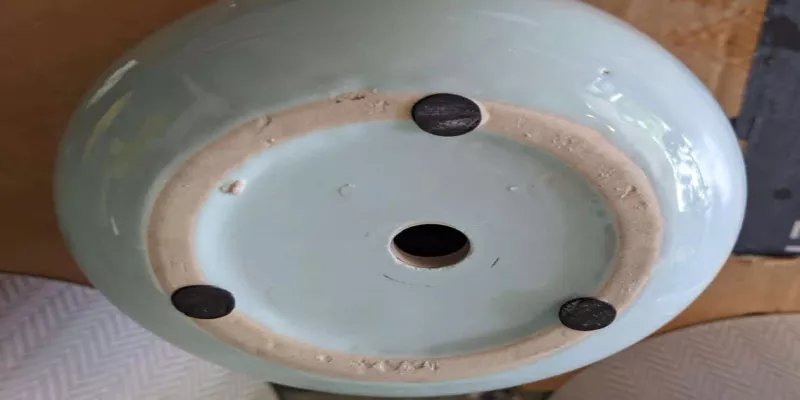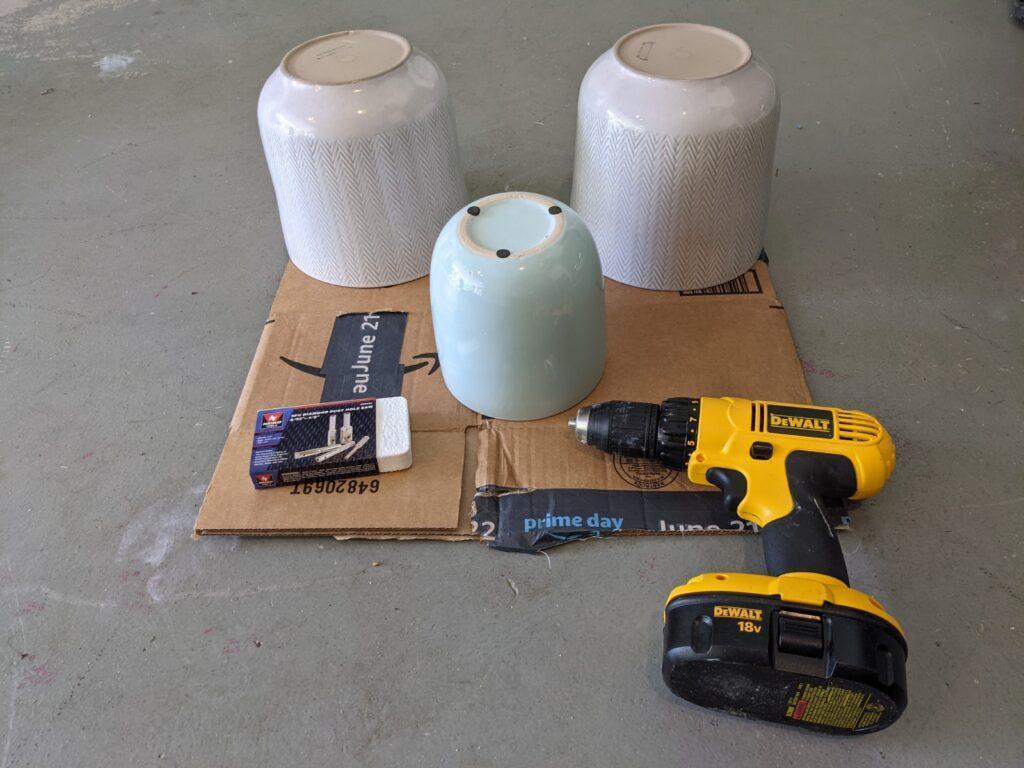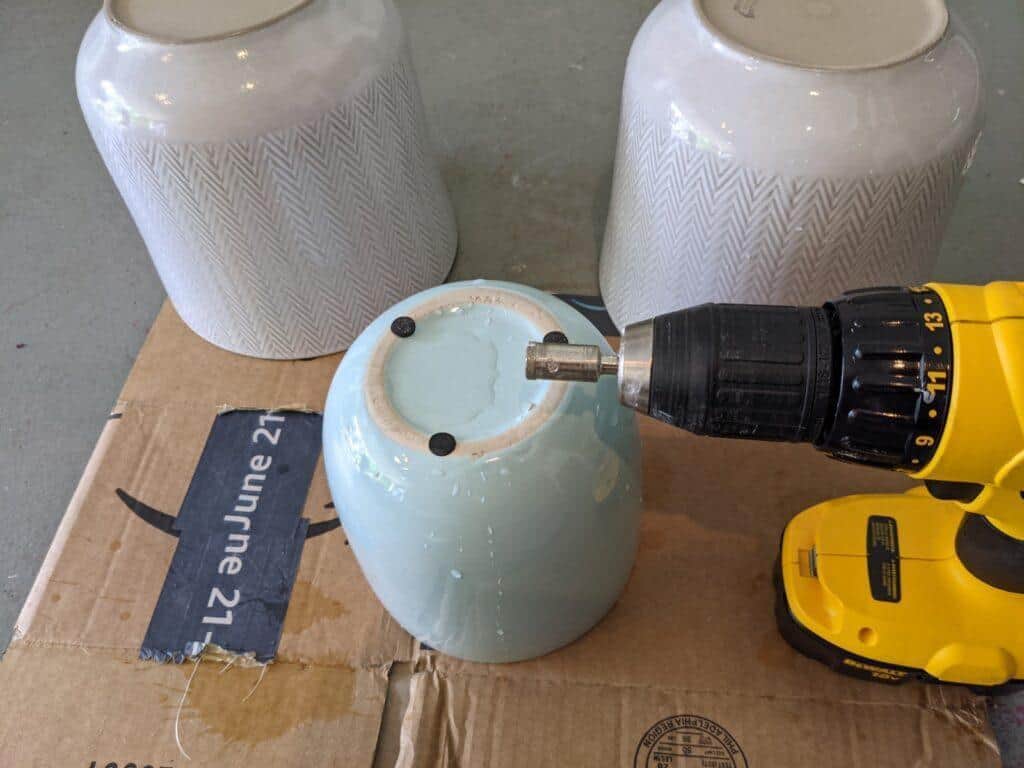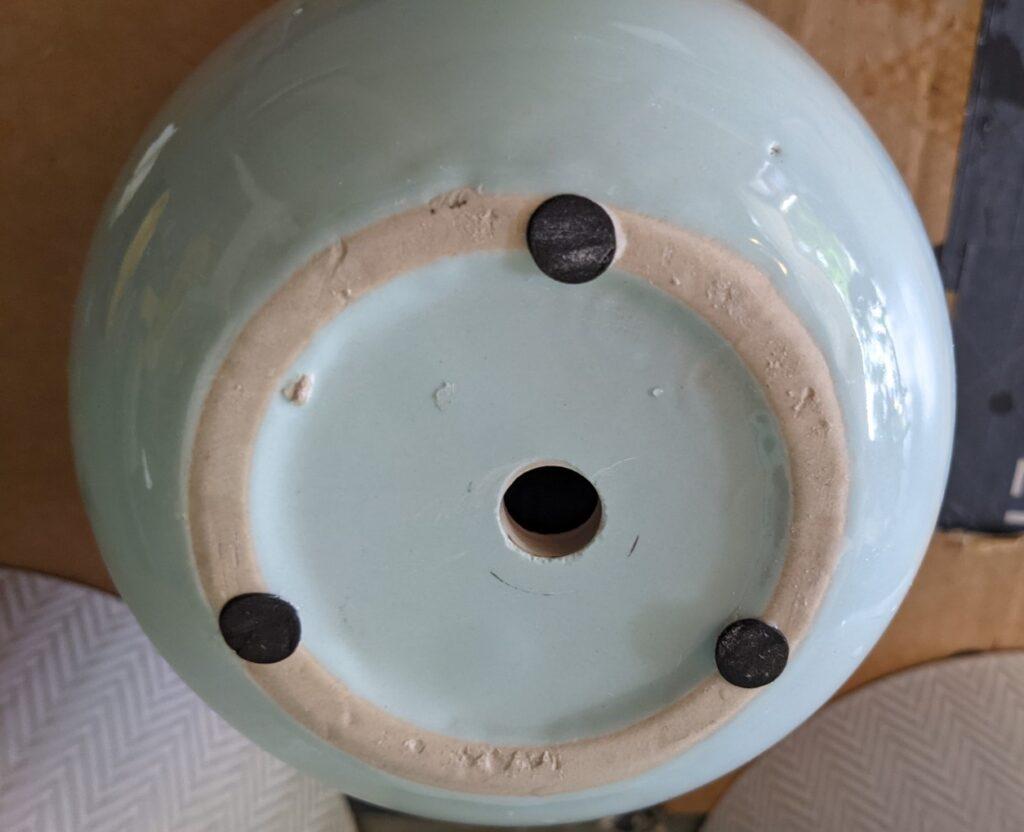How to Drill a Hole in Glass or Ceramic Pots

It's summer and that means all your favorite discount stores like TJMAXX, Home Goods, and Marshalls have killer deals on plant pots. They have really nice decorative plant pots, but frustratingly few actually have drainage holes. If you have read any of my previous blogs, you'll know I don't recommend using a pot without drainage. But what if you love a pot and it's a great deal? Then it's time to invest in diamond drill bits so you can buy all the pots and modify them. I'll show you how to drill a hole in glass or ceramic pots.
Back to topWhat Supplies Do You Need to Drill a Hole in Glass or Ceramic?
You will need a power drill and diamond drill bits. As many of you know plant collecting is addictive. Investing in these tools may be worth it for you so you can buy any pot you want regardless of the presence of drainage holes. I already have a drill at home so the drill bits were a no-brainer for me. I have the Neiko five pack of diamond drill bits, pictured below, and they have worked great for several years. These are nickel plated bits that are made specifically to cut glass and ceramic.
If you don't already have a drill this project may seem daunting. I personally think a power drill is a really nice compact tool to have around. Need to put together furniture occasionally? Or hang curtains or blinds? A drill makes these things easier, everyone should have one. They don't have to break the bank either, a decent budget drill is typically under $30. If you're just using it for these one-off jobs, you don't need anything fancier.

I also like to have a broken-down cardboard box to put under the pot because you will be applying some pressure and you don't want to chip your pot.
Back to topHow Many Drainage Holes in Pots?
If you're interested in undertaking this project, you may be asking, "how many drainage holes do I need?" It really depends on the size of the pot, the size of the holes you plan to drill, and the pot material. For example, a terracotta pot dries out quickly and may require fewer holes than a glass or ceramic pot that it not porous. If you want to drill small holes so that the potting medium doesn't fall out of the bottom then you may need to drill more holes. You get the idea.
My best recommendation for deciding how many holes to drill is to look at a similar-sized pot that does have drainage holes already and copy it. Out of sheer laziness on my own part I often just use the biggest drill bit and make one hole in the bottom of the pot and I haven't been unhappy with the results yet. I think the most important thing is the presence of drainage holes so that water can escape period. Water is heavy, gravity will do the work.
Back to topWhat About Drilling Holes in the Sides of Pots?
You may want to drill holes in the sides of your pots too. Some pots have drainage on the side. I've at least seen plastic nursery pots with them. If you're drilling drainage make sure they are towards the bottom but not too close to the base or you may crack the bottom. You may also want to drill small holes in the sides of pots to attach strings to. That way you can turn it into a hanging planter. Again, be careful putting the holes too close to the top edge of the pot.
Back to topHow to Drill Holes in Glass or Ceramic Pots
Drilling Prep
Finally to the drilling! Like I said earlier, I like to put down a flat cardboard box for some cushion for the pot. I do this in my garage, which has a cement floor, so the cardboard is necessary. A towel would work too, but then you have to wash it. Place the pot downward so the base is facing up. I prefer to drill the hole from the bottom exterior of the pot so the drill bit can go all the way through.

Select the size of diamond drill bit you plan to use and put it in your drill. Plan out your hole placement on the pot. Finally, put some water on the pot. The water is used to reduce heat which is better for the longevity of your drill bits. Make sure your drill is on the drill setting (not all drills will have multiple settings) and a lower level of torque (this would be a number range from 1 to 20, again not all drills have this).
Time to Drill
Once you are ready to drill, start slow. It can take some pressure and a steady hand to get the drill bit to catch and stay put on the pot, especially if the bottom is glazed and you're using a large drill bit. It's harder to get the bit to catch on glass compared to ceramic so be patient. When the drill bit has made a groove in the glass or ceramic you can increase the speed and apply some pressure, but not a lot. In my experience, it takes a good minute or so to drill through a ceramic pot and it takes significantly longer to drill through glass. It obviously depends on how thick the material is.
For ceramic pots, you'll know it's working because the water you put on the pot will become cloudy with the ceramic clay it is removing. Note this process will throw some water off so be careful. I often end up with droplets of ceramic clay splashed around. Be even more careful with glass because the water may be carrying glass shards when it's being flung around.

If you apply a lot of pressure while you are drilling, you may end up prematurely breaking through the pot. I still do this from time to time. It doesn't really matter because it breaks through the inside of the pot, so only the hole that has soil on top of it is a little messy looking. Here's my most recently drilled ceramic pot above. It's a little off-center, but I don't mind as it's the bottom of the pot. I only care that there is adequate drainage.
Back to topHow to Make Drainage Holes in Plastic Pots?
Just to cover all the bases. You can also use this method to drill holes into plastic, or resin, pots as well. In fact, you don't need diamond drill bits, you can just use regular drill bits. In addition, water is probably unnecessary because you won't be generating as much heat. Drilling holes into plastic pots goes much quicker as well.
I hope this How To means you can buy any pot you want now because you can add the drainage yourself. Enjoy!
Back to top
Add new comment